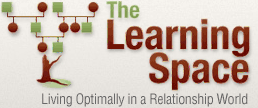Clinical Conference
Differentiation of Self and Neurofeedback
October 06, 2006
Donna Troisi, LCSW-C
Murray Bowen, a Menniger Foundation-trained psychiatrist, embarked on a unique
5-year research project, in which he was able to recruit families with a member diagnosed with schizophrenia to live on an inpatient ward at the National Institute of Mental Health in Bethesda, Maryland. His brilliance lay in his ability to observe and describe behavioral patterns of the family group and what came to be known as emotional process.
The culmination of his life’s work is Bowen Family Systems Theory. Comprised of eight interlocking concepts, Bowen Theory describes variation in functioning between individuals, families, and other emotional groups. Central to Theory is the concept of Differentiation of Self. The concept describes variation in an individual’s functioning as it relates to its responsiveness or reactivity to its emotional system. Reactivity can be thought of as the by-product of the sensitivity of the individual to its environment, which includes its relationship system. In other words, it attempts to explain how one would account for an individual’s ability to maintain (or not) autonomous functioning and operate in a group.
Dr. Bowen wrote about differentiation as a scale as a way of accounting for these differences between people. At one end of the scale would be the more rigid behavioral and thinking / feeling patterns and the less differentiation between people; that is, the greater the level of fusion or emotional dependency. The other end of the scale would show that the greater the flexibility in thinking and behavioral patterns, the greater the differentiation between thinking and feeling and between self and other.
In 1976, Bowen wrote,
It is reasonably accurate to compare the functioning of the emotional and intellectual systems to the structure and function of the brain…Anatomically, it would be more accurate to think of the two as being connected by nerve tracts…the more the separateness between the centers, the more the intellectual center is able to block, or screen out, a spectrum of stimuli from the emotional center. The emotional center controls the autonomic nervous system…and handles the myriads of sensory stimuli from its…organ systems within the body as well as stimuli from all the sensing organs that perceive the environment and relationships with others. (p. 372)
Thus, it seems fitting that kicking off the 40th anniversary of the Clinical Conference Series of The Bowen Center for the Study of the Family would be Priscilla Friesen’s presentation on Differentiation of Self and Neurofeedback. A faculty member of the center, Friesen’s life work has been to observe, tease out, and clarify the interplay of central nervous system activation and emotional process described by Bowen. Her ability to witness the cellular facts of an individual’s sensitivity (reactivity) to its environment and the people in it has been through the use of specialized instrumentation – EEG/Neurofeedback. The unique format of the clinical conference includes video-taped interviews, which illustrate and enrich one’s understanding of the topic being presented.
Neurofeedback uses the EEG, which measures the electrical activity of the brain, to observe the patterns of brainwave activity. Patterns can be correlated to feeling states and behaviors. In neurofeedback, the individual experiences the brain through his senses. It does this by getting feedback (images and sounds) via specialized computer software, which is then projected onto a computer screen that the individual can witness. The feedback reflects changes in the individual’s brain state in real time. Two of the key measurements for observation in NFB are variability of activity (too much or too little) and patterns of activity (flexible or rigid). If the brain has the ability to organize itself and access whatever electrical activity is necessary to attend to the task at hand optimally and efficiently, the brain has focus and flexibility.
Friesen describes the parallels between the emotional process described in Bowen’s work and the observable brainwave patterns of the individual. Patterns of reactivity show that the greater the sensitivity to relationships, the more relationships are experienced as a challenge to “self” and there is more reactivity. The more reactivity that is present, the more patterned the responses; hence, reactivity is reflected in patterned behavior.
The goal of neurofeedback and differentiating self is to interrupt the automatic nature of the patterns in favor of more flexible and self-governed responses. One can do this by becoming more aware of the nature of the reactivity and how it compels behavior.
Thirty years ago, Bowen predicted, “someday we may well discover how to combine differentiation with the structure and function of the human brain.” Friesen’s presentation of her ideas and observations clearly indicate that someday has arrived.

